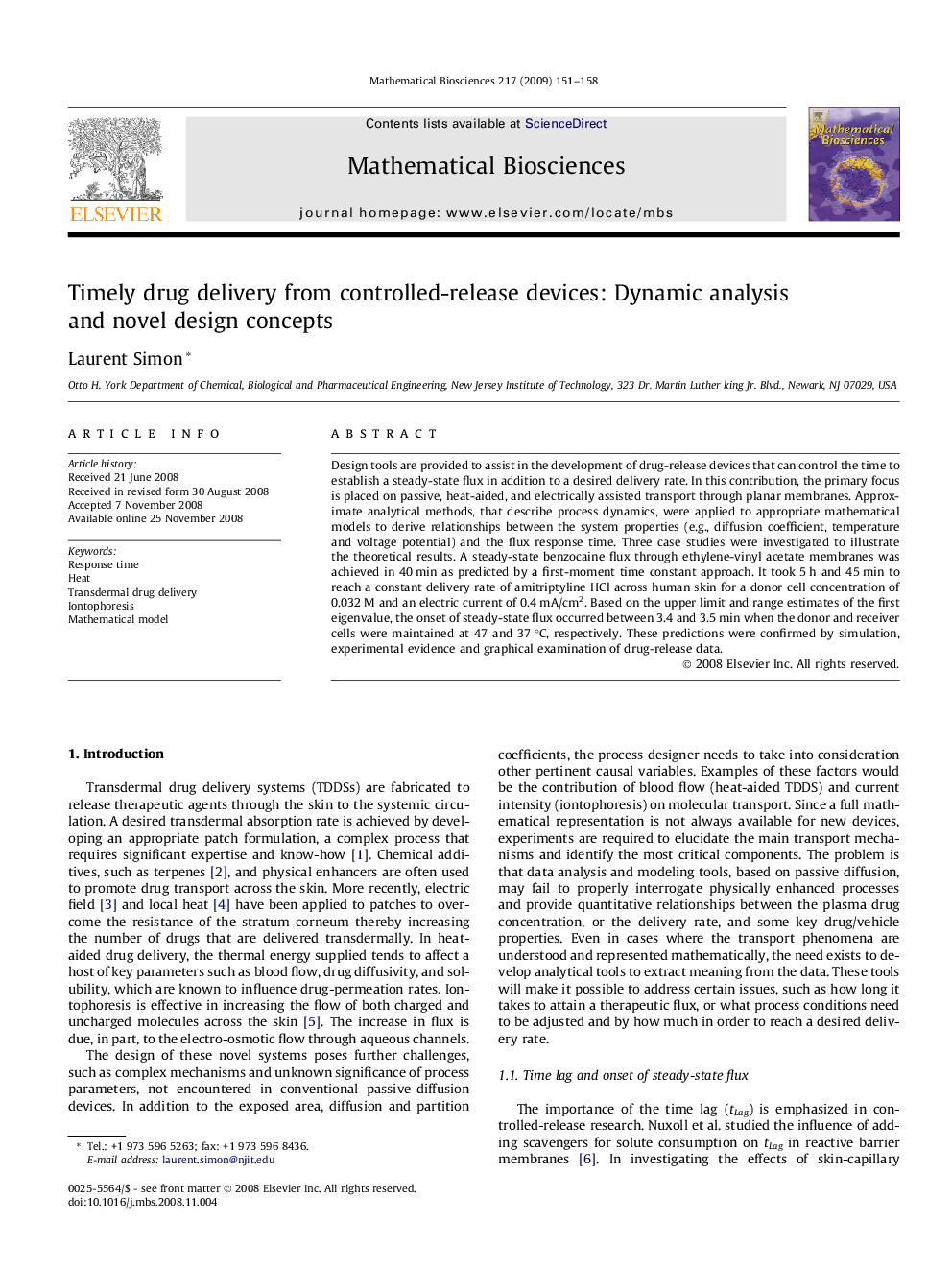| Article ID | Journal | Published Year | Pages | File Type |
|---|---|---|---|---|
| 4500781 | Mathematical Biosciences | 2009 | 8 Pages |
Design tools are provided to assist in the development of drug-release devices that can control the time to establish a steady-state flux in addition to a desired delivery rate. In this contribution, the primary focus is placed on passive, heat-aided, and electrically assisted transport through planar membranes. Approximate analytical methods, that describe process dynamics, were applied to appropriate mathematical models to derive relationships between the system properties (e.g., diffusion coefficient, temperature and voltage potential) and the flux response time. Three case studies were investigated to illustrate the theoretical results. A steady-state benzocaine flux through ethylene-vinyl acetate membranes was achieved in 40 min as predicted by a first-moment time constant approach. It took 5 h and 45 min to reach a constant delivery rate of amitriptyline HCl across human skin for a donor cell concentration of 0.032 M and an electric current of 0.4 mA/cm2. Based on the upper limit and range estimates of the first eigenvalue, the onset of steady-state flux occurred between 3.4 and 3.5 min when the donor and receiver cells were maintained at 47 and 37 °C, respectively. These predictions were confirmed by simulation, experimental evidence and graphical examination of drug-release data.
